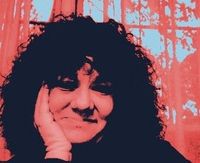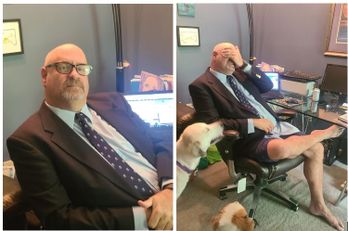-
About
Our Story
back- Our Mission
- Our Leadership
- Accessibility
- Careers
- Diversity, Equity, Inclusion
- Learning Science
- Sustainability
Our Solutions
back
-
Community
Community
back- Newsroom
- Discussions
- Webinars on Demand
- Digital Community
- The Institute at Macmillan Learning
- English Community
- Psychology Community
- History Community
- Communication Community
- College Success Community
- Economics Community
- Institutional Solutions Community
- Nutrition Community
- Lab Solutions Community
- STEM Community
- Newsroom
- Macmillan Community
- :
- English Community
- :
- Bits Blog
- :
- Multimodal Mondays: Observations and Inferences
Multimodal Mondays: Observations and Inferences
- Subscribe to RSS Feed
- Mark as New
- Mark as Read
- Bookmark
- Subscribe
- Printer Friendly Page
- Report Inappropriate Content

Overview
In my classes, I have always recognized the importance of observation and inference as students move back and forth between narration and exposition as they write. This is even more important for digital writers as they learn to read and render situations through multimodal composing. Observation and inference are generally practiced in scientific or social science settings to understand evidence, predict behavior, and generate conclusions, but students benefit from this understanding in composition classes as well.

Inference making is “termed as an act of deriving rational conclusion from known facts or circumstances.” It is generally subjective and involves making assumptions based on observations and often involves secondhand information. This is where we theorize, guess, and make connections. Since inference making is subjective, we often find that we can make many inferences based on a single observation. In a common example, we can observe that the grass is wet (senses) but we can make multiple inferences such as: it rained, sprinklers were on, it is in a flood zone, or a dog recently stopped by (among others). Or, we might notice that someone has a lot of food in their refrigerator and make the inference that they are a good cook or preparing for a vacation or that they are really hungry. Basically, these assumptions could all theoretically be true based on what we observe in front of us but could also generate alternate inferences that could be considered true too.
In this assignment, I ask students to understand and apply the concepts of observation and inference and immerse themselves in a place where they take images of their observations and generate plausible inferences. They set up a visual, double-entry journal of sorts in which they include their images (observations) along with inferences to make meaningful connections. We then create a collaborative slide show to share their ideas through multimodal examples.
Resources
- The St. Martin’s Handbook – Ch. 9g, Thinking Critically about Visual Texts
- The Everyday Writer (also available with Exercises) – Ch.7f, Think Critically about Visual Texts
- EasyWriter (also available with Exercises) – Ch. 8, Reading and Listening Analytically, Critically, and Respectfully
Steps to the Assignment
- Help students define the terms observation and inference (see Key Differences article as a starting place).
- Once I have shared working definitions, I show the class a collection of my own images for an observation and inference making activity in which they call out inferences to practice this cognitive process. I encourage multiple responses to demonstrate the theoretical nature of inference making and ask students to cite evidence from their observations that lead to their conclusions.
- Next, I challenge students to find a location (outside of class on their own) to collect observations in the form of images (usually around 20). I encourage them to use their senses and get specific as they take pictures of objects, landmarks, people, buildings, landscapes, and other things that involve sensory observation.
- Then they choose 10 images and create a page in which they include the image (observation) and a short paragraph describing their inferences (meaning, assumption, idea). I also ask them to include an overview statement in which they speak to some of their connections and ideas (observations and inferences).
- Once back in class together, each student chooses a strong example from their collection and submits the image and an explanation of their inference to a collaborative Google slide show. (This should just take a few minutes if they are prepared ahead of time.)
- We share and review them as a class and talk about examples.
Reflections on the Activity

You must be a registered user to add a comment. If you've already registered, sign in. Otherwise, register and sign in.






